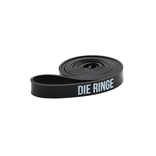Resistance Bands: Choosing the Right Size, and Type for Your Fitness Goals

Unlock Your Fitness Potential: A Comprehensive Guide to Resistance Bands for All Levels
Are you seeking a new way to elevate your fitness routine? Allow me to introduce you to resistance bands, an effective and versatile tool that could become a valuable asset in your fitness journey. In this informative article, we will take a close look at how resistance bands can help you reach your fitness goals. We'll discuss the different types of bands available and how you can choose the right one based on your unique needs and fitness level. With resistance bands, you can strengthen your body, tone your muscles, and increase flexibility. We'll provide you with a variety of exercises and techniques that you can use with resistance bands to target different muscle groups and enhance your workout routine. Moreover, we will provide insights into choosing the correct resistance band for your specific goals, appreciating the versatility and convenience these bands offer for home workouts or training on the go. Whether you are just starting on your fitness journey or you're an experienced enthusiast, this article contains useful information for everyone. So, take this opportunity to learn how you can optimize your workouts and reach your fitness goals with the aid of resistance bands. Read on to gain valuable knowledge and start a new chapter in your fitness journey.

When buying resistance bands, there are several factors to be aware of:
1. Quality and Durability of Best Resistance Bands
Look for bands made from high-quality materials like natural latex or fabric that can withstand repeated stretching and snapping. Check for any manufacturing defects, such as weak spots or tears, that could compromise their durability.
2. Understanding Resistance Levels of Exercise Bands
Resistance bands come in different levels of resistance, typically indicated by color or resistance level. Consider your fitness level and goals to choose bands with appropriate resistance. It's beneficial to have a variety of resistance levels to accommodate different exercises and progression.
3. How Band Thickness and Width Affect Resistance Band Workouts
Thicker and wider bands generally offer more resistance and stability, making them suitable for exercises that require higher levels of tension. Thinner bands, on the other hand, provide lighter resistance and are great for exercises that focus on muscle activation and endurance.
4. Choosing Resistance Bands with Handles and Attachments for Versatile Workouts
Some resistance bands come with handles or attachments like ankle cuffs, allowing for a wider range of exercises and versatility. Check if the handles are comfortable and secure, and if the attachments are adjustable and compatible with your preferred exercises.
5. Length and Flexibility: Key Factors in Selecting Resistance Bands
Consider the length of the bands, especially if you plan to use them for specific exercises that require longer or shorter lengths. Additionally, ensure the bands have enough flexibility to accommodate your range of motion without causing discomfort or limitations.
6. Importance of Safety and User Guidelines When Using Resistance Bands
Look for resistance bands that come with clear instructions and safety guidelines for proper usage. Familiarize yourself with the recommended techniques, limitations, and precautions to reduce the risk of injury.
7. Considering Customer Reviews and Reputation When Buying Resistance Bands
Read reviews from other customers to gauge the overall satisfaction and quality of the resistance bands. Check the reputation of the brand or manufacturer to ensure they have a track record of producing reliable and durable products.
By considering these factors, you can make an informed decision when purchasing resistance bands that align with your fitness needs and provide a safe and effective training experience.

Comparing Loop Bands vs Resistance Bands: What's the Difference?
Resistance bands and loop bands, or mini bands, are both types of exercise bands used for strength training and various types of workouts. The main difference lies in their shape and how they are used.
1. Shape Comparison: Loop Bands and Tube Resistance Bands
Resistance bands typically come in a long, flat strip or tube shape, whereas loop bands form a closed loop or circle. Resistance bands can be held in the hands or anchored to a stable object, while loop bands are designed to be wrapped around body parts or objects.
2. Different Usage Scenarios: Resistance Bands vs. Loop Bands in Workouts
Resistance bands offer versatility as they can be used for a wide range of exercises, including upper-body, lower-body, and full-body workouts. They can be used for pulling, pushing, and stretching movements. Resistance bands with handles can provide a firm grip and allow for greater control during exercises.
On the other hand, loop bands are particularly effective for lower-body exercises, such as glute activation, hip abductions, and squats. Their closed-loop design allows them to stay securely in place without needing to hold onto them. Mini resistance bands are also commonly used for physical therapy and rehabilitation exercises.
3. Resistance Levels: How They Differ in Loop Bands and Resistance Bands
Both resistance bands and loop bands come in various levels of resistance, typically indicated by different colors or resistance ratings. This allows individuals to choose the appropriate level of resistance based on their fitness goals and strength levels. However, it's worth noting that loop bands may have a narrower range of resistance options compared to resistance bands.
4. Portability: Comparing the Convenience of Loop Bands and Resistance Bands
Both resistance bands and loop bands are portable and lightweight, making them convenient for travel or home workouts. They can easily be folded or rolled up to fit in a bag or suitcase.
In summary, while resistance bands offer more versatility and can be used for a wider range of exercises, loop bands are specifically designed for lower-body workouts and offer a secure fit around the legs or other body parts. Both types of bands can be effective tools for strength training and enhancing flexibility. The choice between resistance bands and loop bands depends on individual preferences, specific exercise needs, and desired training outcomes.

Exploring the Spectrum of Resistance Band Levels:
Resistance bands typically come in different levels of resistance, often indicated by color or labeled with a corresponding resistance level. While specific color-coding or resistance levels may vary between manufacturers, here's a general guide to understanding the three common levels of resistance bands:
Light/Beginner (Low Resistance)
Light resistance bands are usually identified by yellow or green colors and offer the least amount of resistance. They are suitable for beginners, individuals with limited strength or mobility, or those recovering from injuries. Light resistance bands are commonly used for rehabilitation exercises, stretching, and low-intensity workouts.
Medium/Intermediate (Moderate Resistance)
Medium resistance bands are often labeled with colors like red or blue. They provide a moderate level of resistance and are suitable for individuals who have built some strength and are looking to progress in their workouts. Medium resistance bands can be used for a wide range of exercises, including upper body, lower body, and core workouts. They are commonly used for strength training, toning, and muscle activation.
Heavy/Advanced (High Resistance)
Heavy resistance bands are the highest level of resistance bands and are typically denoted by colors like black or purple. They offer the most resistance and are suitable for individuals who have developed significant strength and want to challenge themselves further. Heavy resistance bands are commonly used for advanced strength training exercises, such as pull-ups, squats, and deadlifts, as well as for adding extra resistance to bodyweight exercises.
What kind of exercises can I do with resistance bands?
Resistance bands are versatile and can be used for a wide range of exercises that target different muscle groups and provide varying levels of resistance. Here are some examples of exercises you can do with resistance bands:
1. Upper Body Exercises:
Banded Push-Ups: Place a resistance band around your back and hold the ends in your hands, adding resistance to your push-ups.
Band Rows: Step on the band and perform rows by pulling the band towards your torso, targeting the muscles in your back and arms.
Overhead Press: Stand on the band with your feet shoulder-width apart and press the band overhead, engaging your shoulder and arm muscles.
2. Lower Body Exercises:
Squats: Place the band above your knees or loop it under your feet and hold the ends at shoulder height to add resistance to your squats.
Glute Bridge: Place the band around your thighs, lie on your back with knees bent, and lift your hips while squeezing your glutes.
Lateral Band Walks: Step into the band and perform side steps, maintaining tension on the band and targeting your hip abductor muscles.
3. Core Exercises:
Pallof Press: Anchor the band to a stable object, hold the band at chest height, and perform a standing press, resisting the band's pull to engage your core muscles.
Russian Twists: Sit on the floor with the band anchored behind you, hold the ends with both hands, and twist your torso from side to side while keeping your core engaged.
Plank with Band Pull-Apart: Place the band around your wrists while in a plank position, and perform a pull-apart motion, activating your core and shoulder muscles.
4. Full-Body Exercises:
Banded Squat Jumps: Loop the band under your feet and hold the ends at your shoulders. Perform squat jumps, utilizing the resistance of the band for an added challenge.
Standing Woodchoppers: Anchor the band high, hold one end, and pull the band diagonally across your body, engaging your core and rotational muscles.
Standing Banded Rows: Anchor the band at waist height, hold the ends, and perform rows by pulling the band towards your torso, engaging multiple muscle groups.
These are just a few examples, and there are countless other exercises that can be done with resistance bands. You can adapt and modify exercises to suit your fitness level and target specific muscle groups. Remember to use proper form, gradually increase resistance as you get stronger, and consult with a fitness professional if needed to ensure proper technique and safety.

Discover the power of DIE RINGE Resistance Bands available in Three distinct Levels of Strength
Light (red)
Resistance: 5-15kg
Width: 1,8mm
Length 208mm
Thickness: 0,45mm

Medium (black)
Resistance: 10-30kg,
Width: 2.2mm
Length 208mm
Thickness: 0.45mm

Heavy (purple)
Resistance: 20-40kg,
Width: 3.2mm
Length 208mm
Thickness: 0.45mm

Maximize Your Fitness Journey with DIE RINGE Resistance Bands: A Conclusion to the Ultimate Guide
In conclusion, resistance bands offer a remarkable way to add a dynamic element to your workout routine, irrespective of your fitness level. Whether you're just beginning your fitness journey or you're a seasoned athlete, resistance bands can provide an excellent tool to meet your fitness objectives. Their versatility, effectiveness, and convenience truly set them apart, making them a must-have addition to any fitness regimen.
From understanding the different types of resistance bands and their specific applications to learning how to select the right band for your needs, this article serves as a comprehensive guide for anyone looking to supercharge their fitness routine. With resistance bands, you're not only investing in a tool, but you're also unlocking a gateway to achieving your dream fitness results.
Now, ready to start your resistance band journey? Don't just settle for any bands. Choose DIE RINGE Resistance Bands, designed with premium quality, versatility, and your fitness goals in mind. Experience the difference with DIE RINGE, and embark on your journey to a fitter, healthier you today!
Click here to explore our range of resistance bands and find the perfect fit for you. Revolutionize your workouts and achieve your fitness goals with DIE RINGE. Don't wait, ignite your fitness journey now!